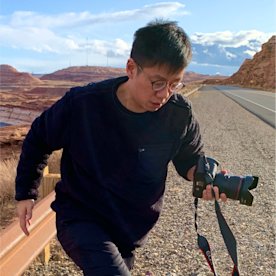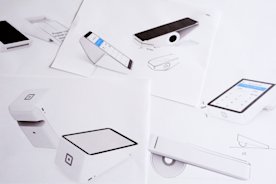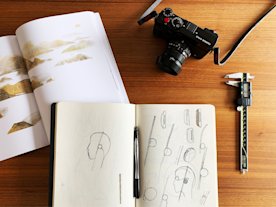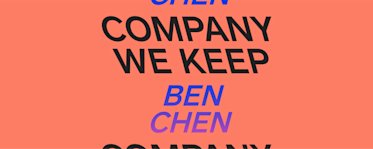Here, we dive deep into how and why people at Square do what they do. Each interview spotlights one person in a creative role and unearths their inspiration, workday hacks, and career advice. Without further ado…

Ben Chen
Industrial Design Lead
Hardware Team
7 years
Portfolio
How would you describe your work to a five-year-old?
Do you know why you want to play with your toys every day? Because many designers put their heart and soul into them, so you like how your toys look, how they feel, how they sound, and what color they are. I design things that people use, so I think about how it will look and feel to them. I want people to love using what I make.
What everyday activity inspires your creative work?
Unintentionally browsing a wide range of creative blogs, including architecture, interior design, furniture, photography, and art. Anything beautiful, thoughtful. This daily browsing doesn’t influence design exploration on my projects right away. It plants the creative seeds in my right brain, so that when I’m scoping design concepts I have something to draw from. It’s long-term accumulation and creative absorption.
What was your path to your current position?
I wanted to study architecture and ended up choosing industrial design as my major in undergrad and graduate school in Taiwan. I worked in Taiwan for a couple of years before coming to a design agency in San Francisco.
Before Square, I worked in a wide range of design workplaces, from small ID design consultancies to corporations focused on hardware. Through these experiences, I learned about manufacturing, design storytelling, and engineering — all of which help me as an industrial designer.
I joined Square seven years ago. I spent my first six months figuring things out. Who were the right stakeholders to pull in for a project? What was the right design iteration process? After gaining a holistic understanding of the company vision and structure, I got to work on exploring concepts and making physical prototypes for show-and-tell with cross-functional teams. That iterative, communicative way led me to an industrial design lead position.
Who’s your favorite Square seller and why? Please provide a link to the seller
Square sellers are just friendly and lovely. I have so many favorite sellers. But here’s a memorable one:
Kyoto breakfast restaurant 喜心. IG: Last year, I went to a Kyoto restaurant where they serve a traditional breakfast in the Gion neighborhood. The breakfast journey is just amazing. First I chose my preferred bowl, made by local ceramicists. Then I ate homemade pickles, charcoal-grilled maruboshi sardine, smoky Hōjicha tea, rich flavor soup, and then a couple of bites of rice cooked for different amounts of time in a donabe. You can really taste the different textures and flavors. After these courses, I had the option to purchase the utensils from my meal through Square! The overall experience was just so joyful and seamless.
What’s a piece of advice you’d give on getting creative?
Always be curious about what’s happening behind the scenes and why.
I think curiosity is the most important thing for becoming a creative person (designer or not).
That’s how you get fresh ideas — opening your eyes to everything and then discovering new findings.
Creative processing
If you had to describe your process in three words, what would they be?
Experimental, relentless, detail-oriented.

What’s your favorite tool for expressing your ideas?
Hand sketches.
When are you most creative?
In the morning after a nice breakfast and pour-over coffee.
What’s your primary fuel for the workday?
Walking in my backyard, and sometimes even some gardening while listening to a podcast works.
What’s your go-to source for creative inspiration?
This is the Tumblr of a Swedish designer currently living and working in San Francisco. He curates extremely beautiful images: photography, architecture, furniture, art, graphic design, fashion — really everything related to creative industries. It’s all categorized by color. The broad range of findings just blows my mind.
What visual best represents you during your creative process?



